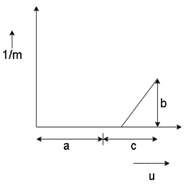Embibe Experts Solutions for Chapter: Ray Optics, Exercise 1: Exercise 1
Embibe Experts Physics Solutions for Exercise - Embibe Experts Solutions for Chapter: Ray Optics, Exercise 1: Exercise 1
Attempt the free practice questions on Chapter 11: Ray Optics, Exercise 1: Exercise 1 with hints and solutions to strengthen your understanding. Comprehensive Guide to AP EAPCET Physics solutions are prepared by Experienced Embibe Experts.
Questions from Embibe Experts Solutions for Chapter: Ray Optics, Exercise 1: Exercise 1 with Hints & Solutions
A ray of light passes through an equilateral prism such that the angle of incidence is equal to the angle of emergence and the latter is equal to of angle of prism. The angle of deviation is
If the refractive indices of a prism for red, yellow and violet colours be , and respectively, then the dispersive power of the prism will be
Minimum deviation is observed with a prism having angle of prism , angle of deviation , angle of incidence and angle of emergence . We then have generally
The refractive index of a material of a prism of angles is . The path of the ray of light incident normally on the hypotenuse side is shown in the figure.
A students plots a graph between inverse of magnification produced by a convex thin lens and the object distance as shown in figure. What was the focal length of the lens used?

Which of the following is not due to total internal reflection?
A ray of light travelling in a transparent medium of refractive index , falls on a surface separating the medium from air at an angle of incidence of . For which of the following value of the ray can undergo total internal reflection?
Two convex lenses of power and are separated by a distance . The power of optical system formed is
